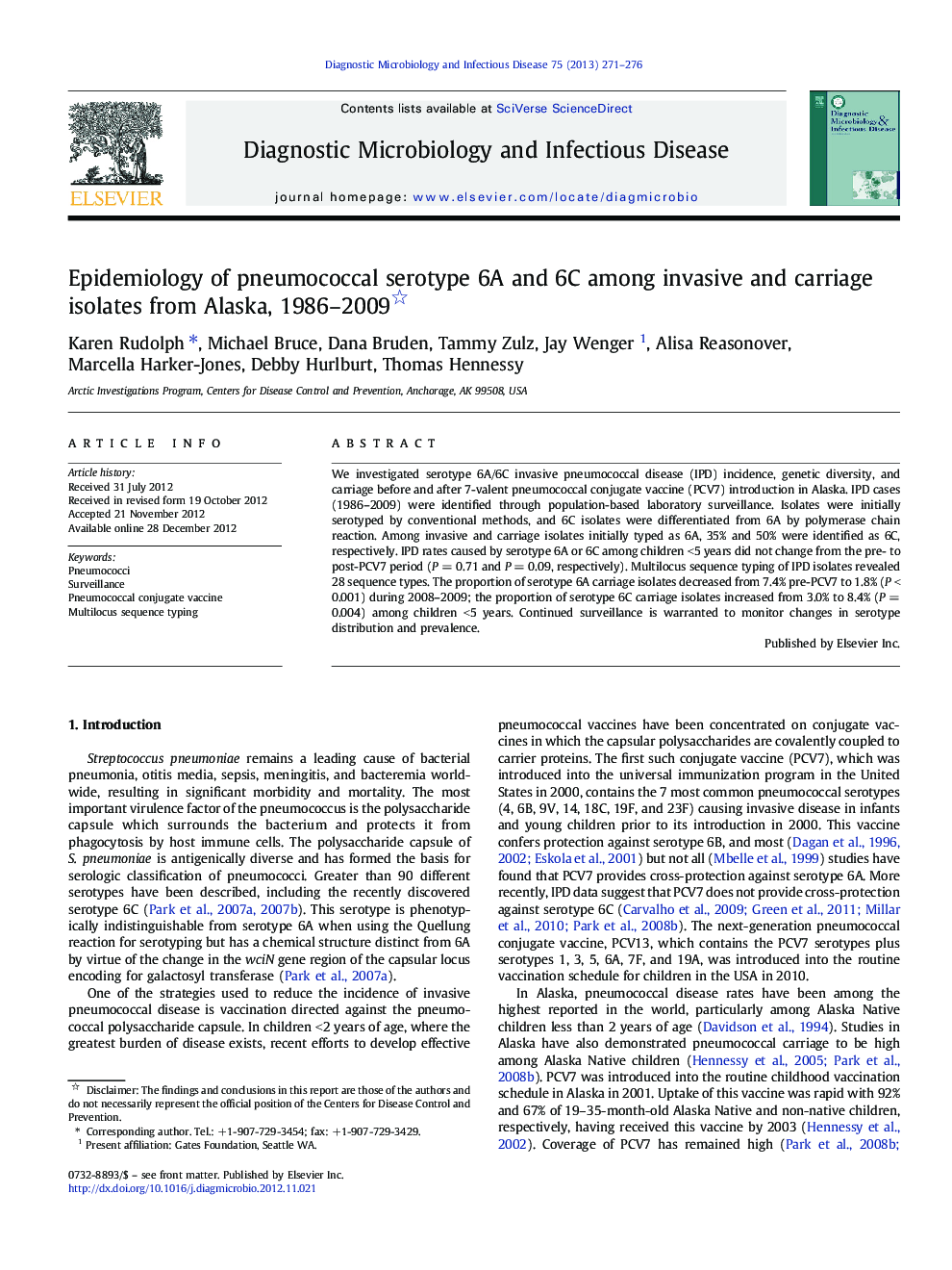| Article ID | Journal | Published Year | Pages | File Type |
|---|---|---|---|---|
| 6116169 | Diagnostic Microbiology and Infectious Disease | 2013 | 6 Pages |
Abstract
We investigated serotype 6A/6C invasive pneumococcal disease (IPD) incidence, genetic diversity, and carriage before and after 7-valent pneumococcal conjugate vaccine (PCV7) introduction in Alaska. IPD cases (1986-2009) were identified through population-based laboratory surveillance. Isolates were initially serotyped by conventional methods, and 6C isolates were differentiated from 6A by polymerase chain reaction. Among invasive and carriage isolates initially typed as 6A, 35% and 50% were identified as 6C, respectively. IPD rates caused by serotype 6A or 6C among children <5 years did not change from the pre- to post-PCV7 period (P = 0.71 and P = 0.09, respectively). Multilocus sequence typing of IPD isolates revealed 28 sequence types. The proportion of serotype 6A carriage isolates decreased from 7.4% pre-PCV7 to 1.8% (P < 0.001) during 2008-2009; the proportion of serotype 6C carriage isolates increased from 3.0% to 8.4% (P = 0.004) among children <5 years. Continued surveillance is warranted to monitor changes in serotype distribution and prevalence.
Related Topics
Life Sciences
Immunology and Microbiology
Applied Microbiology and Biotechnology
Authors
Karen Rudolph, Michael Bruce, Dana Bruden, Tammy Zulz, Jay Wenger, Alisa Reasonover, Marcella Harker-Jones, Debby Hurlburt, Thomas Hennessy,
